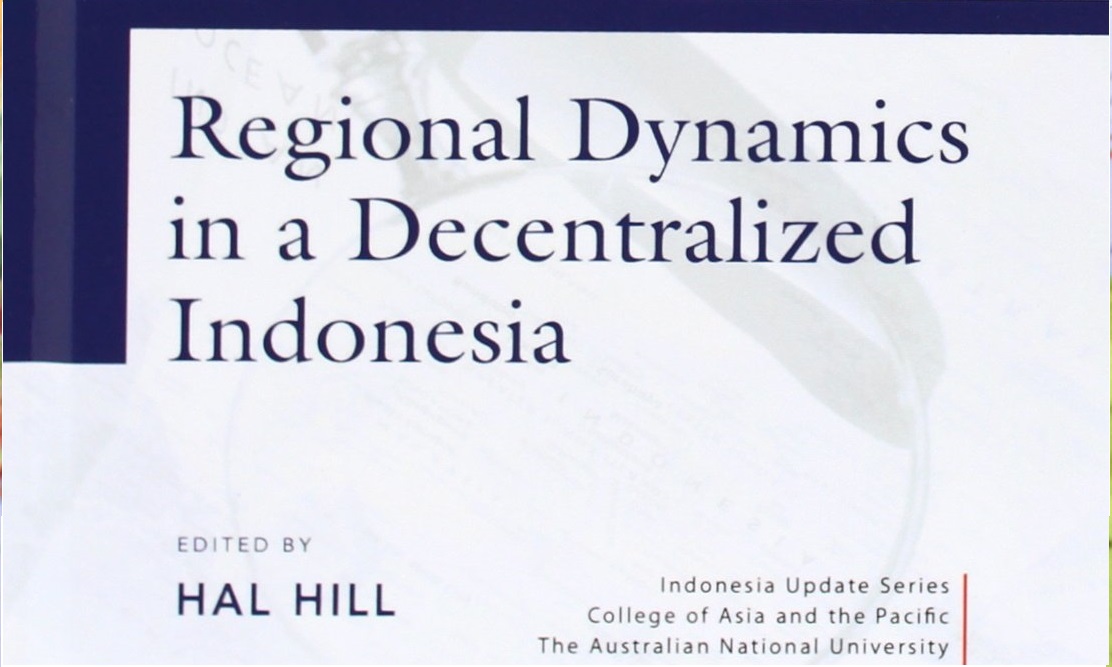Regional Dynamics in a Decentralized Indonesia

As one of the hallmarks of Indonesia’s democratization process, decentralization has received plenty of academic attention in recent years. One of the most comprehensive accounts is now provided in Hal Hill’s edited volume ‘Regional Dynamics in a Decentralized Indonesia’. Featuring twenty chapters that focus primarily, though not exclusively, on socio-economic aspects of decentralization, the volume is divided into five main sections: broad introductions into major historical, economic, political and social patterns; decentralization and governance; local-level perspectives; migration, cities and connectivity; and challenges for Indonesia’s periphery, specifically Papua and Aceh.
Most contributions in this volume offer a critical yet well-balanced assessment of decentralization in Indonesia. Practically all chapters acknowledge the multitude of problems that have plagued the implementation of regional autonomy, but many authors also highlight that at least some achievements have been made. From a political perspective, for example, Mietzner argues that more credit should be given to decentralization for ensuring the survival of the Indonesian nation-state which, after all, was facing some serious threats at the time decentralization began. As he points out, ‘the surprising thing about post-Suharto decentralization is not that it has faced seemingly overwhelming difficulties; […] the really astonishing feature of decentralization 13 years after it was launched is how stable centre-periphery relations have become (p. 62)’. Similarly, Ilmma and Wai-Poi conclude their analysis of regional poverty patterns by saying that the ‘implementation of decentralization seems to have neither greatly accelerated poverty reduction (as its proponents claimed it would) nor led to a significant slowing (as its critics had feared) (p. 129).’ And Schulze and Sjahrir argue in one of the governance chapters that ‘decentralization seems to have improved service delivery outcomes, even though the picture is not as clear-cut as might have been expected (p.203)’.
With twenty chapters, the book covers a lot of ground, but the expansive scope also means that there is a bit of overlap in some of the chapters. Others appear to be only superficially linked to decentralization, especially in the section on migration and connectivity. At times, therefore, one gets the impression that less may have been more. Arguably, the same could be said about the large number of tables and figures in some chapters, although that is unlikely to be of concern to economists and quantitatively oriented social scientists.
Overall, the tone of the book could perhaps best be described as cautiously optimistic. Warning against overly high expectations, Hill points out early in the book that ‘the decentralization system is still in its infancy, and the reforms are a work in progress. […] The key test will come in another decade or so […] (p.19)’. That may well be true; however, it is by no means clear that regional autonomy will still exist in another decade or so. Although it is popular with the masses and newly empowered local elites, many central government officials and party elites in Jakarta do not support decentralization. In recent years, senior bureaucrats from the Ministry of Home Affairs have often sought to weaken the regional autonomy framework. Whether this attitude will change under the new Jokowi administration remains to be seen.





